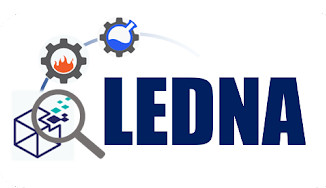The laser pyrolysis appears is a promising and versatile method allowing the production of high purity nanoparticles using the gas phase synthesis, ensuring well-defined chemical composition, morphology and crystallinity (more information).
The laboratory has developed synthesis of nanoparticles with applications in the fields of energy and environment (see examples)
Example of applications
Example 1: Oxide nanopowders efficient for photocatalysic degradation of model pollutants
TiO2 nanoparticles doped with nitrogen and/or decorated with gold were synthesized by Laser pyrolysis. These nanoparticles exhibit interesting performances for photocatalytic degradation of formic acid as well as carboxylic acids (C1 to C6)


Références
Bouhadoun, S. Synthèse de nanoparticules de dioxyde de titane par pyrolyse laser et leur application en photocatalyse. (PhD de l’Université Paris-Saclay, octobre 2015).
Bouhadoun, S. et al. One step synthesis of N-doped and Au-loaded TiO2 nanoparticles by laser pyrolysis: Application in photocatalysis. Applied Catalysis B: Environmental 174–175, 367–375 (2015).
Example 2: Oxide nanoparticles for the synthesis of C2H4 by photocatalysis
A current challenge is the synthesis of carbonaceous molecules such as ethylene (the world’s most consumed organic molecule) while limiting the use of energy and fossil resources. TiO2 nanoparticles decorated with metals (Zn, Fe, Ni, Pt…) have been synthesized by laser pyrolysis Cu/TiO2 nanoparticles were efficient to produce ethylene from propionic acid.


Fig- Sélectivité C2H4 vs. hydrocarbures
Références
Karpiel, J. Synthèse par pyrolyse laser de nanoparticules à base de dioxyde de titane et application à la production d’éthylène par photocatalyse. (PhD de l’Université Paris-Saclay, octobre 2023).
Karpiel, J. et al. One-Step Synthesis of CuxOy/TiO2 Photocatalysts by Laser Pyrolysis for Selective Ethylene Production from Propionic Acid Degradation. Nanomaterials 13, 792 (2023).
Application 3: silicon based nanoparticles for energy storage
Development of devices, such as Lithium-Ion batteries, to store energy is necessary in the frame of energy transition and increasing their energy density is a very active field of research. Silicon is a good candidate because an (Si/Li) alloy can store several lithium atoms per silicon atom. However, the performances of batteries containing Silicon are decreasing fast and various solutions are investigated to improve stability i) protect silicon with an inert layer and ii) explore other si based alloys.
- To protect silicon with an inert layer
A novel « double stage » set up has been developed to produce silicon nanoparticles at the first stage and coat it with a carbon layer at the second stage, it was possible to obtain a homogeneous carbon layer (up to 19 wt%) on silicon. The presence of carbon shell allows better use of silicon



- other silicon based alloys : SiGe
Using various ratio of silane and germane, nanoparticles exhibiting the same ratio were obtained and improved stability was achieved using these materials.


References
ANR project – Batteries Li-Ion à haute densité d’énergie à base de nanoparticules cœur@coquille silicium carbone | ANR
Dominguez, D. Z. et al. Influence of the Ge content on the lithiation process of crystalline Si1−xGex nanoparticle-based anodes for Li-ion batteries. J. Mater. Chem. A 11, 19025–19035 (2023).
Desrues, A. et al. Best Performing SiGe/Si Core-Shell Nanoparticles Synthesized in One Step for High Capacity Anodes. Batteries & Supercaps 2, 970–978 (2019).
Sourice, J. et al. One-Step Synthesis of Si@C Nanoparticles by Laser Pyrolysis: High-Capacity Anode Material for Lithium-Ion Batteries. ACS Appl. Mater. Interfaces 7, 6637–6644 (2015).
Sourice, J. Synthèse de nanocomposites cœur-coquille silicium carbone par pyrolyse laser double étage : application à l’anode de batterie lithium-ion. (PhD de l’Université Paris Sud – Paris XI, April 2015).
Desrues, A. Matériaux composites Si@C nanostructurés pour anodes de batterie Li-ion à haute densité d’énergie. Relations entre structure/morphologie et mécanismes de dégradation. (PhD de l’Université Paris-Saclay, May 2020).
Application 4: Nanostructured carbide ceramics for 4th generation nuclear reactors.
The aim of this research is to develop and study new materials that meet the requirements of the nuclear industry of the future, particularly in terms of mechanical strength under high-temperature irradiation. In this context, nanostructured carbide materials (SiC, ZrC, TiC) appear to be interesting candidates. They offer improved mechanical properties compared with conventional ceramics, and thanks to their high density of grain boundaries could prove more resistant to irradiation damage.

The synthesis of TiC nanopowders is initiated by precursors of the type Ti(OC3H7)4 (aerosol) + C2H4 (sensitizer).At the reactor outlet, TiOxCy (x ~ 2) powders are formed. Annealing under Argon enables the formation of nanostructured TiC. Nanostructured ZrC is synthesised using a similar method.
The development of nanostructured ceramics and the study of their properties are carried out in collaboration with the Institute of High Pressures in Warsaw, which has developed a flash sintering technique that is particularly well suited to nanomaterials. As a result, no nanograin growth is observed during the sintering operation.

NIMBE Research Axis




